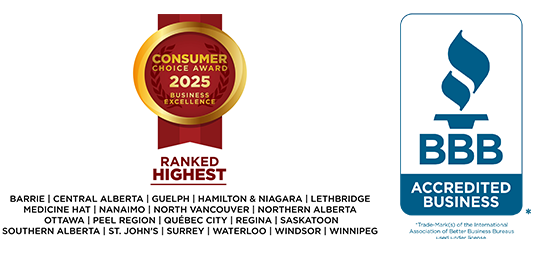Owing money to the Canada Revenue Agency (CRA) can feel like an uphill battle. It’s easy to imagine they have unlimited power to collect, leaving you with little room to breathe. While their collection tools are strong, you still have the rights and options to regain control.
Whether your balance comes from personal income taxes, GST/HST, payroll deductions, or other amounts owing, it’s important to understand how the CRA works, what actions it can take, and how you can protect yourself.
How the CRA collects debt
The CRA is unlike most creditors because it doesn’t need a court order to collect on unpaid balances. If you don’t pay or make arrangements, they can move quickly to recover debt. Common actions include:
- Freezing your bank accounts by sending a Requirement to Pay to your financial institution.
- Garnishing your wages directly from your employer before you receive your pay.
- Seizing and selling assets by registering a lien against your home or other property.
- Offsetting any tax refunds or federal/provincial benefits, such as GST/HST credits, to apply against your debt.
These measures can significantly impact your day-to-day finances and continue until the debt is cleared or a formal arrangement is in place.
Interest, penalties, and extra costs
If your balance remains unpaid after the due date, the CRA begins charging compound daily interest on the amount owing. Each day, interest is added to your balance, and the next day’s interest is calculated on that new amount. Even a modest debt can grow quickly if left unpaid.
On top of interest, you may face late-filing penalties if you did not submit your tax return on time.
For businesses, missing remittance deadlines for GST/HST or payroll deductions can lead to separate penalties, each calculated on the amount overdue. In certain cases, directors of a corporation can be held personally liable for unpaid source deductions.
There are also indirect costs to consider. If the CRA freezes your account or garnishes wages, you may face overdraft charges, missed bill payments, and damage to your credit history. The disruption can also create stress and uncertainty that affects both your personal life and your ability to plan ahead.
The takeaway is that the sooner you address CRA debt, the more control you have over limiting these costs.
What you can do
It may not feel like it now, but there are practical steps you can take to deal with CRA debt, even if the amount feels overwhelming. The most important thing is to act before penalties, interest, and collection actions make the situation harder to manage.
The right approach will depend on your circumstances, but these steps can help you start moving in the right direction.
- File all outstanding returns: The CRA will not consider a payment arrangement or other relief measures unless you are up to date with your tax filings. Filing late is better than not filing at all because it stops additional late-filing penalties from accumulating and gives you a clear picture of what you owe.
- Contact the CRA to discuss payment arrangements: If you cannot pay the full balance, the CRA may allow you to make smaller, regular payments over time. Be prepared to share details of your income, expenses, and assets. While the CRA’s payment terms can be strict, even partial relief can help prevent more severe collection actions.
- Apply for Taxpayer Relief: If you have faced circumstances beyond your control, such as a serious illness, natural disaster, or job loss, you may be eligible to have penalties or interest cancelled or reduced. Applications require supporting documents, and processing can take several months, so it is best to apply as soon as possible.
- Seek professional help early: A Licensed Insolvency Trustee (LIT) is the only federally regulated debt professional who can offer legal solutions like Consumer Proposals and Bankruptcies. These options can stop CRA collection actions and discharge tax debt in many cases. Meeting with an LIT does not mean you have to file, as it’s a no-obligation opportunity to learn your rights and review every possible path forward.
- Keep communication open: Avoiding calls or letters from the CRA will not make the problem disappear. Responding promptly can show you are making an effort and may give you more flexibility in negotiating terms.
Moving forward with confidence
Dealing with CRA debt can be stressful, but you do not have to face it alone. A Licensed Insolvency Trustee can help you understand your options, assess your financial situation, and create a plan that works for you. Even if bankruptcy is not the right choice, they can provide strategies to address the debt and reduce the risk of falling behind again.
If you are carrying a significant balance with the CRA, reach out to a Licensed Insolvency Trustee at MNP Ltd. for a free, confidential consultation. You’ll get guidance on the solutions available to help you resolve the issue and move toward a more stable financial future.



